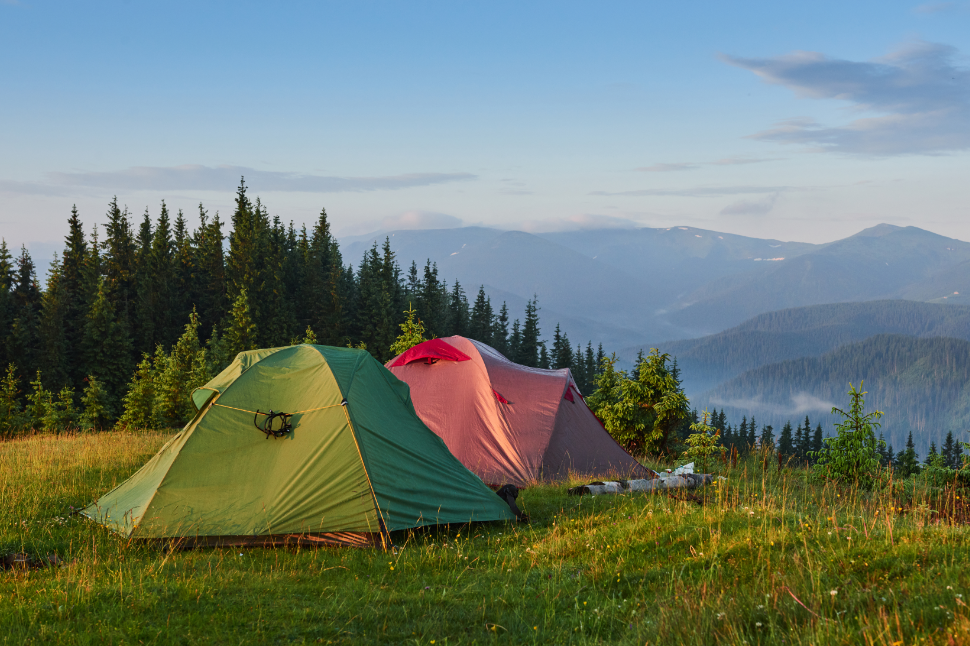
It’s widely known that sites in the great outdoors continue to attract millions of visitors every year, but sadly, such visitors rarely consider the negative impact of their presence. The truth is, many sadly leave behind litter, trail erosion, and even invasive species by mistake. If you are one who enjoys exploring nature and taking regular camping trips to rural spots, make sure you know how to keep things as eco-friendly as possible. Read our five tips on preserving the beauty of nature, and achieving an eco-friendly camping trip.
Avoid using single-use plastics
One of the golden rules of leading a more environmentally-conscious lifestyle is to use reusable items as much as possible. As well as avoiding plastic bottles, which have the worst reputation for being environmentally-damaging, there are a number of other types of packaging to think about when it comes to camping accessories. Consider opting for the following:
- Snacks packed in lunchboxes instead of cellophane, foil, or their own supermarket packaging. Where possible buy things like fruit and nuts that are sold in re-usable bags, or no packaging at all.
- Bring reusable mugs and cups to use for tea/coffee and other drinks, including refilling at campsite drinking water stations. Thermos flasks are a good idea to keep drinks or soups warmer for longer.
- Use tote bags instead of plastic bags for packed lunches and other items you might need for a day out.
If you’re camping abroad and are worried about refilling bottles with tap water, consider boiling it first. Boiling water is the most reliable way of purifying it. As long as you remember to collect the water before you need it, so it has time to boil and then cool, this is an ideal method to use to avoid buying plastic bottles of water.
Stick to paths and trails
Most popular nature sites all over the world have been developed by conservationists and tourist associations to include carefully planned out routes. Whether these are paved paths or dusty trails, they have been carved out specifically for visitors to use.
By sticking to these routes, visitors can help to preserve the surrounding nature. Not only can straying from the path be unsafe, but it will also cause erosion and other damage to the flora and fauna that’s present. Be sensible and kind to nature by adhering to the routes that have been planned, and keep in mind that these will still reward you with awe-inspiring views and pretty scenery.
Take only pictures!
Environmentalists have been advocating this slogan for many years, but it remains as relevant now as it ever did. While camping and exploring gorgeous outdoor locations, visitors are asked not to take any natural elements that they might come across. These could be:
- Rocks and pebbles
- Coral
- Flowers and other plants
- Wood
- Sand
While it might be tempting to take a few pebbles for the garden, or some wildflowers to decorate your home, consider how damaging this could be to the environment if every visitor decided to do so. Let us all enjoy nature for longer in the years to come by taking only pictures and leaving only footprints.
Rent or buy second-hand equipment
Many campers do not realise how much equipment they can access through second-hand and rental shops/camping clubs. It’s no secret that camping equipment can be quite pricey, so consider exploring your options to rent or borrow some. This might be a particularly useful option if you are new to camping, or you only require some specific equipment for a day or two.
Equipment to consider borrowing, renting, or buying second-hand includes:
- Tents
- Campervan awning
- Sleeping bags
- Lighting
- Cooking equipment
- Walking sticks
- Cleats
- Rucksacks
- Water treatment equipment
Use natural products as much as possible
One way of being more eco-friendly that can be applied to life in general, as well as to camping, is to use natural products wherever possible.
As well as opting for reusable packaging, consider what it’s made of. It’s possible to find things like tote bags, shampoo bottles, and reusable cups made from natural materials such as bamboo. Likewise, all kinds of other daily necessities are now available in materials, from bowls made out of coconut shells to clothing made out of organic cotton.
Other equipment to consider for camping could be recycled plastic tents, organic cotton towels, hessian doormats, and bamboo toilet paper.
It’s important for those who go camping to consider the different ways they can be environmentally responsible, so as to preserve the world around us for the good of humankind. Only by taking measures such as those outlined above can we all continue to enjoy the great outdoors, making memories and basking in wildlife.
Written by Jason Sims
About the Author
Jason Sims is a Marketing Executive at Just Kampers and Just Kampers Insurance. Jason is a fully fledged VW enthusiast, with over 20 years’ experience in keeping Volkswagens old and new on the road. Currently owns a 69 Cal Look Beetle, and enjoys attending VW shows and Camping with friends and family.
You may also like
7 Backyard Makeover Ideas: Sustainable is Always In
Plants You Should Place in Your Living Room and The Ones You Shouldn’t
How to Create Good Habits and Help the Environment
How to Be More Eco-Friendly When Spending Time Outdoors
